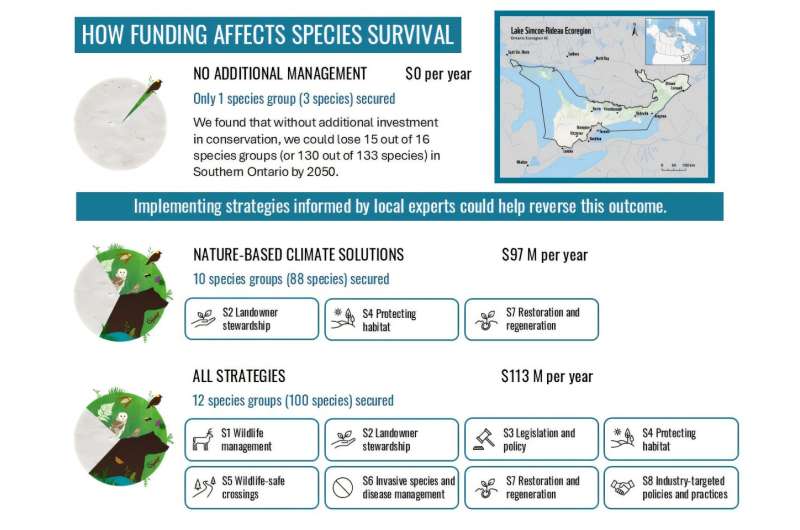A recent study highlights a pressing environmental crisis in Southern Ontario, where 133 species are at risk of local extinction by 2050 unless the provincial government implements effective conservation measures. Conducted by the University of British Columbia and the World Wildlife Fund Canada, the research reveals that 98% of these species could vanish from the region without intervention.
The study, published in the journal Ecological Solutions and Evidence, emphasizes the need for immediate action to protect vulnerable species such as the black bear, short-eared owl, and Blanding’s turtle. Researchers estimate that an investment of merely $7 per Ontarian could facilitate the recovery of up to 75% of these species through a series of targeted conservation strategies.
Investment in Conservation Strategies
The researchers identified eight key conservation strategies requiring an annual investment of approximately $113 million. These include habitat protection, wildlife management, and the establishment of safe crossings for animals. Notably, this funding represents less than one-tenth of one percent of Ontario’s 2024 provincial budget, making it a feasible option for the government.
Abbey Camaclang, one of the study’s authors and a researcher at UBC’s Faculty of Forestry, stated, “If Ontario continues with a ‘business as usual’ approach, 130 species—98% of those at risk—could disappear from the region by 2050. Our analysis shows recovery is possible and identifies the most cost-efficient ways to achieve it.”
The research utilized the Priority Threat Management (PTM) framework, designed by Dr. Tara Martin, to assess and prioritize conservation actions based on their potential benefits and costs. This method enables decision-makers to focus their efforts on strategies that yield the greatest impact for the least expense.
Broader Benefits of Conservation Efforts
In addition to preserving wildlife, the proposed strategies have the potential to enhance water quality, protect culturally significant species for Indigenous Peoples, and create new job opportunities. Implementing these actions could also lead to a reduction of at least 11.2 million tonnes of CO2 equivalent emissions and an increase in carbon sequestration by 137.6 million tonnes, contributing to Ontario’s climate change mitigation goals.
James Snider, Vice President of Science, Knowledge and Innovation at WWF-Canada, underscored the urgency of the situation, stating, “Without new investments and strong legislation, we risk losing species like the American bumble bee, barn owl, Eastern wolf, and piping plover, while weakening ecosystems that are essential for community well-being and livelihoods.”
The findings from this study echo similar applications of the PTM framework in other regions, such as the Wolastoq watershed in New Brunswick, where WWF-Canada has successfully restored over 5,300 hectares of habitat and planted more than 31,000 trees and plants.
Dr. Martin highlighted the significance of these findings, saying, “By applying PTM to the Lake Simcoe-Rideau ecoregion, we’ve identified the most effective conservation actions and can now quantify their broader benefits—improved water quality, job creation, carbon storage. This gives decision-makers a clear roadmap to recover species at risk while delivering real environmental and societal value.”
As the urgency for decisive action grows, both the University of British Columbia and WWF-Canada are advocating for a collaborative approach among stakeholders to ensure the survival of the region’s at-risk species. The time to act is now, as the future of Southern Ontario’s biodiversity hangs in the balance.







